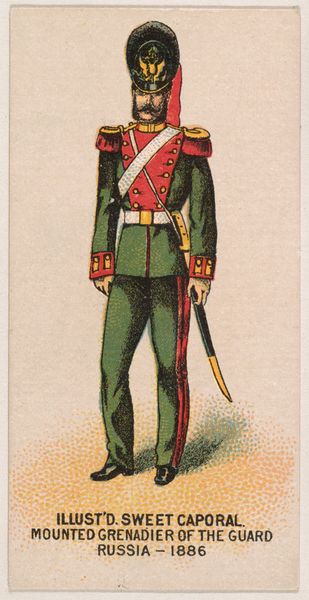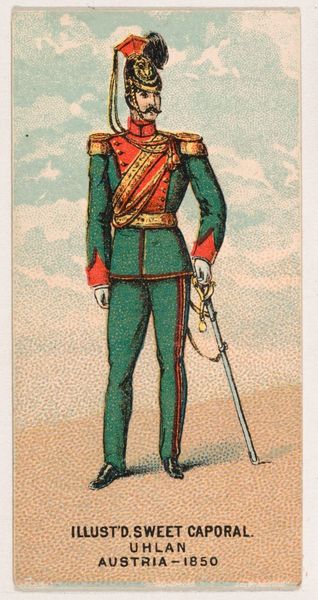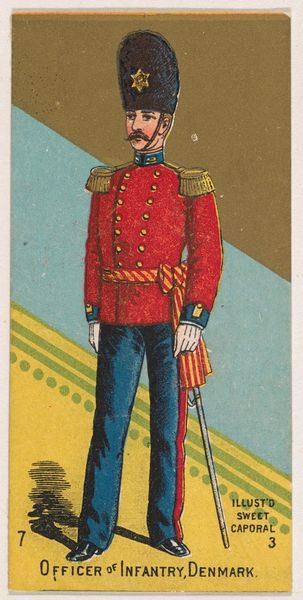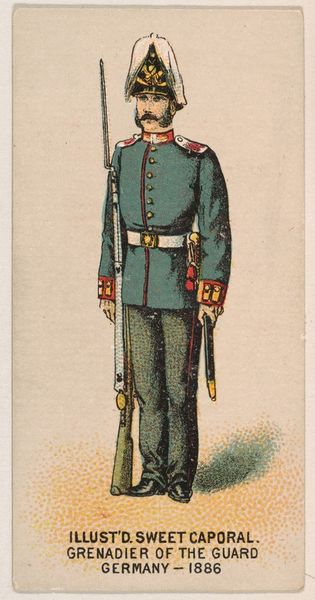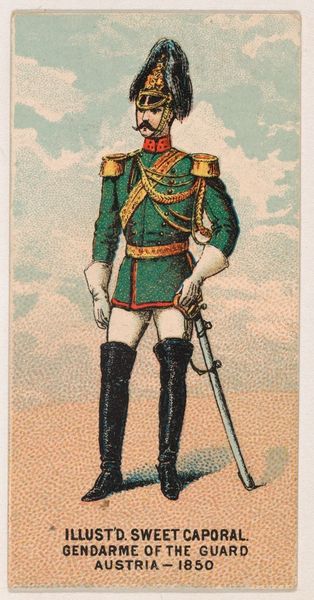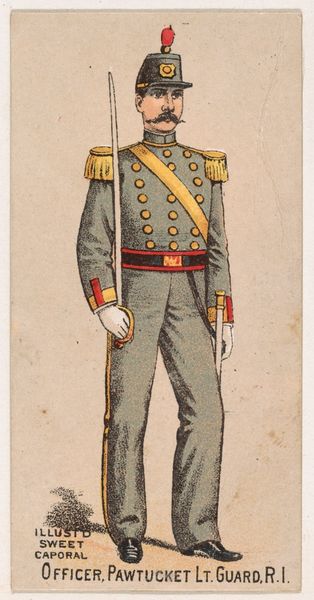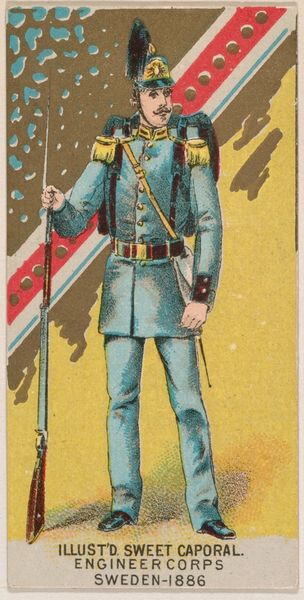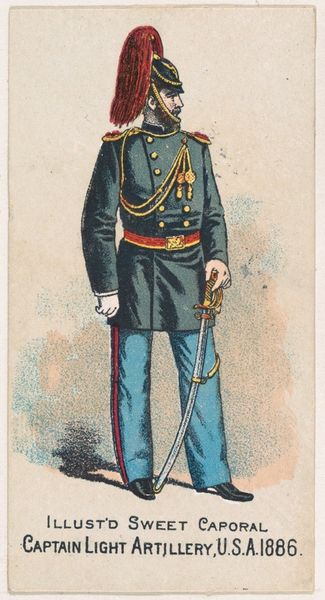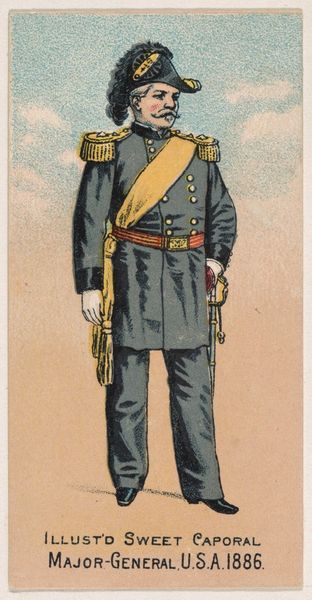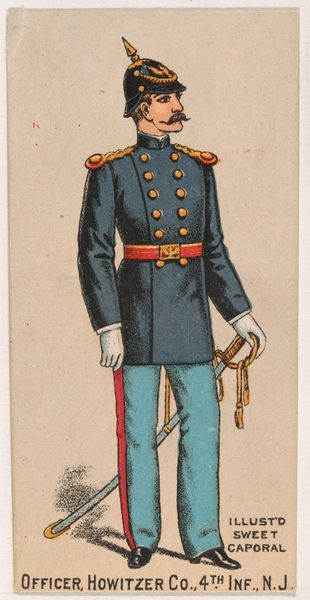
Sixth Regiment of the Guard, Russia, 1886, from the Military Series (N224) issued by Kinney Tobacco Company to promote Sweet Caporal Cigarettes 1888
0:00
0:00
drawing, coloured-pencil, print
#
portrait
#
drawing
#
coloured-pencil
# print
#
coloured pencil
#
history-painting
#
academic-art
Dimensions: Sheet: 2 3/4 × 1 1/2 in. (7 × 3.8 cm)
Copyright: Public Domain
Curator: Here we have an 1888 print produced by the Kinney Tobacco Company titled "Sixth Regiment of the Guard, Russia, 1886." It was included in their Military Series, created as promotional material for Sweet Caporal Cigarettes. What strikes you immediately? Editor: Well, for starters, it's small and exquisitely detailed. Given its origin as a cigarette card, it must have been consumed and circulated widely, practically designed for the pocket. There's an intimacy implied by its scale and use. Curator: Absolutely. The figure stands stiffly in profile, but there’s an intriguing formality to it. Look at the rigid posture, the careful articulation of his uniform… What echoes do you find in it? Does it remind you of other images, stories? Editor: The lithographic process here interests me. Note the use of coloured pencil. There’s something slightly unreal in the coloring; his olive-drab uniform doesn't suggest actual fabric, more of a theatrical representation. I'm curious about who exactly made the drawing; where they located it within the means of production, and how many hands the drawing passed through? Curator: Fascinating question, and one not easily answered! I’m more captivated by the symbolic power packed into this little rectangle. Notice the elaborate headdress: it practically screams authority, projecting might and tradition through visual cues. He’s instantly recognizable, carrying centuries of military history in his bearing. The posture indicates respect. Editor: True, but for what purpose? The primary purpose of its circulation wasn't honor but commerce, a disposable luxury item propping up an idealized vision of imperial power. Curator: Indeed, so here is where we get to the trick of commercial artwork that speaks beyond that moment. Even now the image transmits information, about identity, uniform codes and also class aspiration. What an economic reach a tiny colorful cardboard could once have! Editor: Exactly, this small, mass-produced object provides a keyhole view into a particular moment of cultural imagination. This object is very efficient at transmitting a series of details in a quickly digested format that became ingrained. Curator: Seeing the figure like this certainly deepens my understanding of late 19th century representations of military authority and how images become powerful memory triggers. Editor: And seeing that image reminds me again that the grand narratives of history are always supported by an army of ordinary, ephemeral objects that also tell us what it was like to desire something during a particular moment in the economic history.
Comments
No comments
Be the first to comment and join the conversation on the ultimate creative platform.
